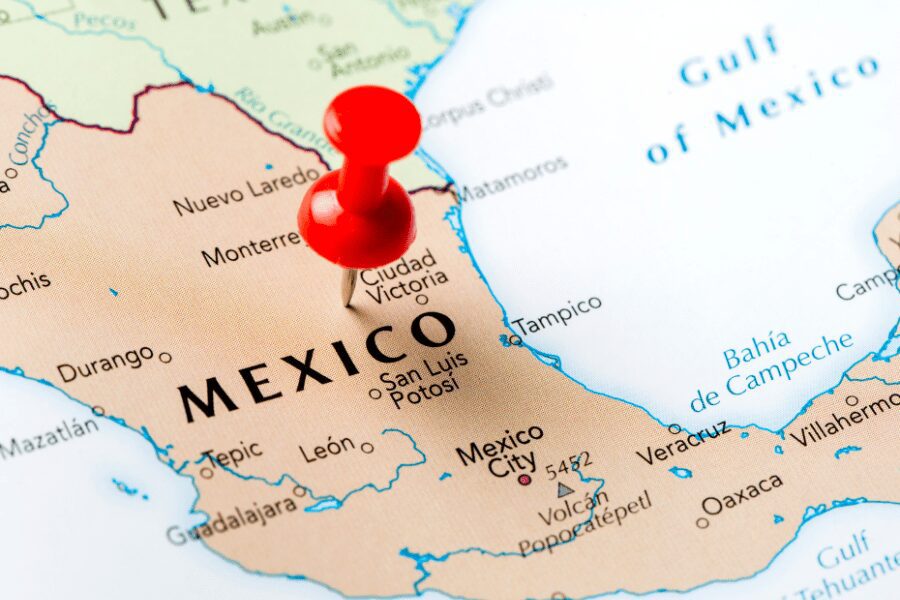Nearshoring to Mexico: How American Importers Have Responded to the US-China Trade War
When tariffs on Chinese goods first hit 25% in 2018, American importers faced an immediate calculation: absorb costs that would destroy margins, pass increases to customers in competitive markets, or fundamentally restructure supply chains built over decades. Between 2018 and 2019, US imports from China declined from $539 billion to $449 billion—a 16.7% drop that represented the largest supply chain reallocation in modern trade history. The primary beneficiary? Mexico, which surpassed Canada in 2019 to become America’s leading trade partner, a position it maintains today.
For importers of mechanical parts, consumer goods, electronics, furniture, and garments, understanding how nearshoring to Mexico has evolved since the trade war began—and the opportunities and complications this creates—has become essential for competitive positioning in 2025 and beyond.
The Nearshoring Revolution: From Concept to Reality
Nearshoring refers to relocating production to countries geographically closer to the target market, reducing shipping times, freight costs, and supply chain vulnerability. For US importers, Mexico’s 2,000-mile contiguous border, participation in the USMCA trade agreement, and competitive manufacturing costs created the perfect storm of advantages when Chinese tariffs made the status quo untenable.
Mexico’s Rise in US Trade Share
Since the USMCA came into effect, Mexico’s exports to the US have surged by 30%, reaching $434 billion in 2023. This growth isn’t merely statistical—it represents fundamental restructuring of North American manufacturing networks. Mexico now accounts for approximately 30% of US imports when combined with Canada, while China’s share has declined from 22% in 2017 to 17% in 2022.
The manufacturing shift reflects not just American companies relocating from China, but also a complex web of Chinese firms establishing Mexican operations, European manufacturers diversifying away from Chinese concentration, and multinational corporations reconfiguring global value chains. Companies like Tesla, BMW, Ford, and GM have announced massive investments in Mexican facilities, while Chinese automotive manufacturers including BYD are following suit to maintain US market access.
The USMCA Advantage
The United States-Mexico-Canada Agreement provides the regulatory framework that makes nearshoring economically viable. Unlike the Section 301 tariffs imposed on Chinese goods, products manufactured in Mexico qualifying under USMCA rules of origin enter the US duty-free. This tariff advantage alone can offset higher Mexican labor costs compared to Southeast Asian alternatives.
For automotive manufacturers, USMCA’s regional value content requirements create strong incentives for North American production. For electronics assemblers, duty-free component flows within the region reduce total landed costs. For furniture and mechanical parts, proximity advantages compound tariff savings through reduced freight expenses and faster time-to-market.
Product Categories Leading the Nearshoring Wave
Different industries have embraced Mexican nearshoring at varying speeds based on manufacturing complexity, supply chain requirements, and Mexico’s existing capabilities.
Automotive and Auto Parts: The Established Leader
The automotive sector has driven US-Mexico trade for decades, but the trade war accelerated expansion. Major automakers including BMW, Audi, and Tesla have announced billions in new Mexican investments focused on electric vehicle production. Chinese automotive brands have increased their Mexican presence dramatically, with annual sales of Chinese-branded vehicles surging from 28,614 units in 2021 to 129,329 units in 2023.
For importers of automotive aftermarket parts, mechanical components, and accessories, Mexico’s established automotive supply chain provides comprehensive capabilities from metal stamping through final assembly. The concentration of tier-one suppliers around manufacturing hubs like Monterrey and Guadalajara creates ecosystem advantages difficult to replicate elsewhere.
Electronics and Computer Accessories
Electronics manufacturing represents one of Mexico’s fastest-growing sectors. Major investments in semiconductor assembly, computer peripherals, and consumer electronics have established Mexico as a credible alternative to Asian production. For importers of power adapters, cables, computer accessories, and electronic components, Mexican suppliers increasingly offer comparable quality at competitive total landed costs when shipping time advantages and tariff savings are factored.
However, electronics nearshoring faces challenges. Complex products requiring specialized components often still depend on Asian supply chains, with Mexican operations focused on final assembly rather than complete vertical integration. For products requiring cutting-edge semiconductor fabrication, Mexico’s capabilities remain limited compared to Taiwan, South Korea, or even China.
Furniture and Household Goods
Furniture manufacturing has experienced significant nearshoring momentum. Mexico’s established timber industry, skilled woodworking workforce, and competitive labor costs make it attractive for products from bedroom sets to outdoor furniture. The elimination of ocean freight for bulky, low-value-density products like furniture creates substantial cost advantages for Mexican production.
For furniture importers, Mexico offers particular strengths in wood furniture, metal furniture frames, upholstered goods, and furniture requiring final assembly. Quality levels have improved significantly as established manufacturers have invested in modern equipment and finishing capabilities. However, certain specialized materials or hardware may still require Asian sourcing, creating hybrid supply chain models.
Garments and Textiles
The apparel industry’s relationship with Mexican manufacturing predates the current nearshoring wave, but trade tensions have renewed interest. Mexico’s textile industry offers capabilities from yarn spinning through garment finishing, though capacity constraints exist in certain specialized categories.
For garment importers, Mexico provides advantages in faster lead times enabling rapid response to fashion trends, lower minimum order quantities compared to Asian factories, easier communication and oversight due to time zone alignment, and USMCA benefits for products meeting yarn-forward requirements.
However, Asian alternatives, particularly Vietnam and Bangladesh, often offer lower labor costs for basic garments. Mexico makes most sense for products where speed-to-market justifies slightly higher unit costs or where USMCA preferential treatment provides decisive advantages.
Mechanical Parts and Industrial Components
Mechanical parts manufacturing has grown steadily as importers diversify from Chinese concentration. Mexico’s capabilities in CNC machining, metal stamping, welding, and assembly have attracted manufacturers of industrial components, consumer product mechanical elements, and aftermarket parts.
For mechanical parts importers, Mexico offers advantages in shorter lead times for tooling modifications and engineering changes, easier quality issue resolution through direct communication, lower freight costs for heavy metal components, and reduced inventory carrying costs due to shorter supply chains.
High-precision aerospace or medical device components may still require manufacturing locations with more advanced capabilities, but general industrial tolerance parts increasingly source from Mexican suppliers successfully.
The Complex Reality: Chinese Investment in Mexico
One of nearshoring’s most unexpected developments involves Chinese companies establishing Mexican operations to access US markets tariff-free. Since 2020, China’s foreign direct investment in Mexico has increased more than it did throughout the entire 2010s. Major Chinese investments include Lingong Machinery Group’s $5 billion manufacturing facility in Nuevo León and Trina Solar’s $1 billion solar facility, with numerous smaller operations following.
This creates an ironic situation: US tariffs intended to reduce dependence on China have, in some cases, simply relocated Chinese manufacturing to Mexico rather than replacing it with American or Mexican-owned production. Data shows China-to-Mexico container traffic increased 26.2% from January to July 2024 after growing 33% in 2023, as Chinese manufacturers ship components to Mexican facilities for final assembly before US export.
Transshipment Concerns and Rule of Origin Enforcement
The influx of Chinese goods through Mexico has raised concerns about transshipment—the practice of routing Chinese products through Mexico with minimal transformation to evade tariffs. US customs authorities have increased scrutiny of Mexican imports suspected of merely relabeling Chinese goods without substantial manufacturing occurring in Mexico.
For American importers, this heightened enforcement creates compliance risks. Ensuring genuine Mexican manufacturing with proper country-of-origin documentation has become critical. Third-party factory audits and ongoing quality inspections provide documentation demonstrating actual production occurs in Mexico, protecting against customs challenges.
Practical Considerations for American Importers
Importers implementing Mexican nearshoring strategies face several practical realities that affect success.
Infrastructure Challenges and Lead Times
While Mexico offers proximity advantages, infrastructure constraints can create bottlenecks. Port capacity at major facilities like Manzanillo and Lázaro Cárdenas faces strain from increased volumes. Power supply reliability varies by region. Transportation networks between manufacturing centers and border crossings require careful logistics planning.
For importers, these infrastructure realities mean lead times from Mexico may be longer than geographic proximity suggests. A product manufactured in Guangdong, China might reach Los Angeles faster than one produced in southern Mexico requiring overland transportation to Texas border crossings.
Labor Costs Rising But Still Competitive
Mexican manufacturing wages have increased as nearshoring demand intensifies. From 2005 to present, the wage advantage over China has narrowed in some regions. However, Mexico’s average manufacturing salaries remain lower than China’s, particularly in areas outside major industrial hubs.
For labor-intensive products like garments or furniture assembly, Mexico maintains cost competitiveness. For automated manufacturing with lower labor content, wage differences matter less than other factors like logistics efficiency and supply chain reliability.
Quality Assurance and Supplier Management
Mexican suppliers vary dramatically in capabilities, quality systems, and reliability—just as suppliers in any country do. Successful nearshoring requires thorough supplier qualification including comprehensive factory audits verifying production capacity, quality management system assessments, financial stability evaluation, and ongoing performance monitoring.
Professional inspection companies including QIMA, ProQC, HQTS, and V-Trust maintain strong networks in Mexico capable of conducting factory audits, pre-shipment inspections, and ongoing quality monitoring. These third-party services provide independent verification essential for managing supplier performance as you establish Mexican sourcing.
The China Plus One Strategy in Practice
Rather than wholesale relocation, most successful importers implement China Plus One strategies maintaining Chinese production while adding Mexican capacity. This approach balances risk across geographies while leveraging each location’s comparative advantages.
Complex products requiring extensive Asian component ecosystems may maintain Chinese assembly with Mexican operations focused on simpler products or final market-specific customization. High-volume stable products might fully transition to Mexico while new product development continues in China where prototyping infrastructure remains superior.
Looking Forward: Mexico’s Nearshoring Future
Mexico’s position as America’s top trading partner appears secure for the foreseeable future, driven by structural factors beyond current tariff policies. However, several developments will shape nearshoring’s trajectory.
Infrastructure Investments Required
Mexico must invest significantly in port capacity, electrical generation, water systems, and transportation networks to support continued manufacturing growth. The Mexican government has announced infrastructure initiatives, but execution remains critical to maintaining competitiveness.
Workforce Development Needs
Nearshoring increasingly involves advanced manufacturing and automation rather than basic assembly. Mexico must upgrade workforce skills through technical training and education to meet evolving industry requirements. Manufacturing competitiveness will depend on knowledge and skills as much as labor cost advantages.
Trade Policy Uncertainties
While USMCA provides stability through 2036, political pressures around Chinese investment in Mexico, concerns about transshipment, and evolving US industrial policy create uncertainties. Importers must monitor regulatory developments that could affect nearshoring economics.
Conclusion: Nearshoring as Strategic Evolution
The US-China trade war that began in 2018 accelerated nearshoring trends that economic fundamentals were already driving. For American importers of mechanical parts, consumer goods, electronics, furniture, and garments, Mexico has evolved from convenient supplement to strategic cornerstone of North American supply chains.
Success requires understanding that nearshoring isn’t simply relocating Chinese operations to Mexico—it involves building hybrid supply chains leveraging comparative advantages across multiple geographies. Some products and components will remain Chinese-sourced indefinitely due to technological capabilities or supply chain ecosystems. Others will successfully transition to Mexican production, delivering proximity benefits, tariff savings, and reduced geopolitical risk.
The importers thriving in this environment treat nearshoring as multi-year strategic initiatives requiring significant supplier development, comprehensive quality assurance, and realistic expectations about capabilities and timelines. Those approaching it as quick-fix solutions to current tariff rates will face disappointment.
Get Quotes and Ensure Quality
Across Your Supply Chain
Contact Info
Our location
Unit 2A, 17/F, Glenealy Tower No 1. Glenealy, Central Hong Kong


